The government is grappling with the consequences of a moribund economy where growth has disappeared, despite it being a priority if future state funding commitments are to be met.
At least rail passenger numbers and revenue are continuing a revival that has brought demand to within 97% of pre-COVID levels.
The government is grappling with the consequences of a moribund economy where growth has disappeared, despite it being a priority if future state funding commitments are to be met.
At least rail passenger numbers and revenue are continuing a revival that has brought demand to within 97% of pre-COVID levels.
And there is every prospect that long-term planning assumptions, as part of earlier Network Rail Route Utilisation Studies which forecast passenger numbers would grow by 21/2% annually, will continue to be valid. This will bring back capacity enhancement projects and improve the business case for new services.
As always with statistics, varying outcomes can be demonstrated. But the headline figure published by the Office of Rail and Road (ORR) for the three months from July-September 2024 showed that 433 million journeys were made compared with 448 million five years ago. The year-on-year increase was 9%.
Revenue growth continues to lag behind the increased number of journeys, with an average fare of £6.74p - a 2% increase from £6.63 for the corresponding period in 2023. This was despite an increase in regulated fares of 4.9% (below the 9% level of inflation recorded in July 2023 - this is the monthly statistic used for the usual January increase, although the 2024 rise was postponed until March).
The Scottish government makes independent decisions about fares. It did not apply any increases during the pandemic, which resulted in a catch-up with a 4.8% increase in July 2023 (excluding season tickets) and a much larger 8.7% rise at the beginning of April 2024 covering all categories.
Given nationalisation of both ScotRail and Caledonian Sleeper, all fare levels are now controlled, whereas individual train operating companies in England remain able to set fares for products such as Advance purchase.
A greater understanding of the divergence between passenger and revenue growth has prompted more detailed analysis by the ORR, given that income remains supressed at 86% of pre-COVID levels.
Most obviously, the effect of widespread working from home continues to account for weaker season ticket sales, which fell again to just 11% of the total in the latest data.
However, it is now appreciated that the opening of the central section of the Elizabeth line in May 2022 has caused a transfer of journeys from the London Underground and Docklands Light Railway, which has inflated usage statistics with travel at lower fares.
There is also increased use of split ticketing, as customers use digital technology to identify where buying more than one ticket for a single journey can reduce the overall cost. The train operators estimate that the practice is increasing, with 5% of journeys made by passengers using multiple cheaper tickets instead of one more expensive ticket.
In England and Wales, regulated fares will rise by a further 4.6% from March 2 2025, with a £5 increase in the cost of Railcards that give access to discounted fares for nine categories of potential travellers - including young persons, family and friends, the disabled, and seniors.
One of the disturbing aspects about the continued ratcheting-up of fares is that there is little sign that the journey experience is improving. Cancellations are at an unprecedented level, and many vehicle interiors can only be described as spartan - designed for rush hour commuting that is greatly reduced in favour of discretionary travel.
A study of real-time train departures using the National Rail app continues to highlight train crew shortages as the cause.
This is becoming a thin excuse, as the recruitment and training problems that occurred during the pandemic should be behind us - despite the length of time it takes for a new recruit to pass out as a driver, which is where the main issues appear to be.
Operational controls are, in reality, seeking to maintain services against the backdrop of an unprecedented level of short-notice sickness, absenteeism, and an unwillingness to work on rest days or to agree to overtime.
There has been little comment from the embryo Great British Railways team about the intended management of labour relations, and the way that pay and conditions of employment are to be negotiated in the future.
By chance, I have been reading the excellent British Railways 1948-73: A Business History (author T. R. Gourvish), which recorded that from vesting day in 1948 the British Transport Commission would direct labour relations from the centre and appoint trade union representatives in a supporting role.
With hindsight, the result was disappointing as the trade union officials appointed in their place continued to lead the membership as before. The negotiating atmosphere about pay and conditions, if anything, became worse - in the end leading to a damaging national strike that saw rail traffic divert to road transport… and not return.
The lack of economic growth is hampering the prospects for a rejuvenated rail freight sector. In contrast to increased passenger demand, freight haulage is little changed, with a 2% increase in net tonne kilometres compared with the corresponding period last year.
The market is greatly diminished as a result of the closure of coal-fired power stations, with the final plant at Ratcliffe on Soar being decommissioned last September. The movement of coal for electricity generation dominated rail freight traffic for many decades, and although there has been a conversion to use biomass as a rail-supplied fuel at Drax and Lynemouth, the demise presents a tough challenge for future growth.
Bulk traffic needs for the steel industry are also in decline, and the recent end of steel making at Port Talbot represents the loss of another traffic source, along with reduced production at Scunthorpe.
The future is dominated by prospects for increasing international maritime transits between ports and distribution centres, which is constrained by the limits of the existing Strategic Freight Network and current levels of demand for consumer goods.
It is, however, helped by the trend away from High Street retailing to home delivery, which involves large-scale distribution hubs that are increasingly rail-connected.
An encouraging 4% increase in this traffic was achieved compared with the previous year, with the benefit of modal shift grants and incentive packages offered by port operators.
For rail freight activity as a whole, past performance demonstrates that national economic growth is needed for it to prosper.
Login to continue reading
Or register with RAIL to keep up-to-date with the latest news, insight and opinion.


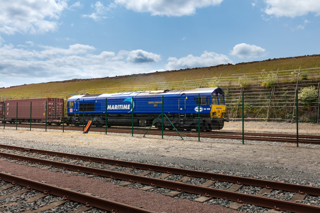
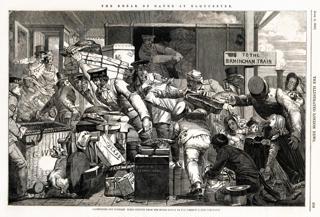
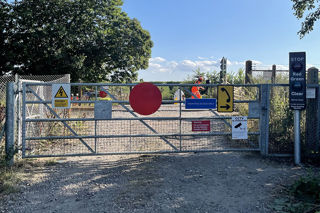
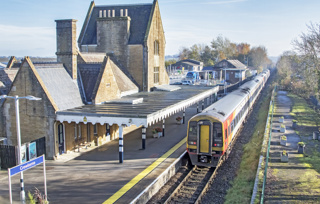


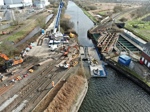







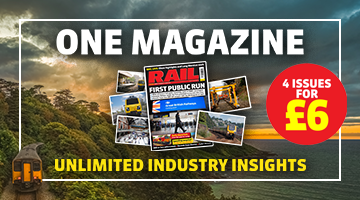

Login to comment
Comments
No comments have been made yet.